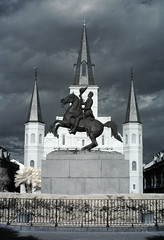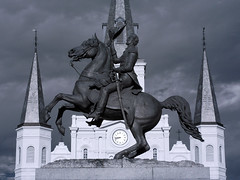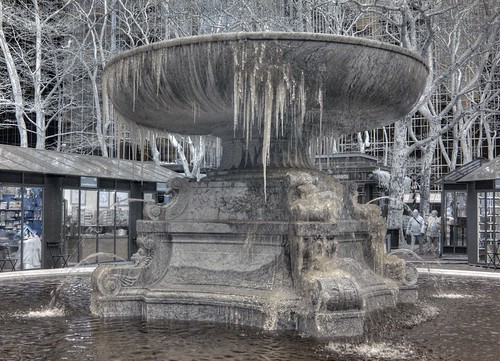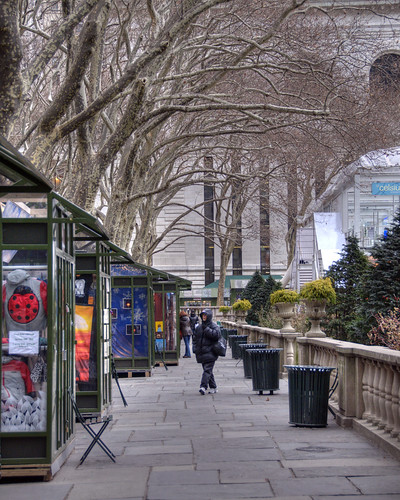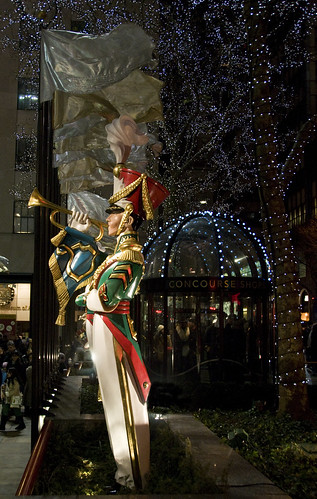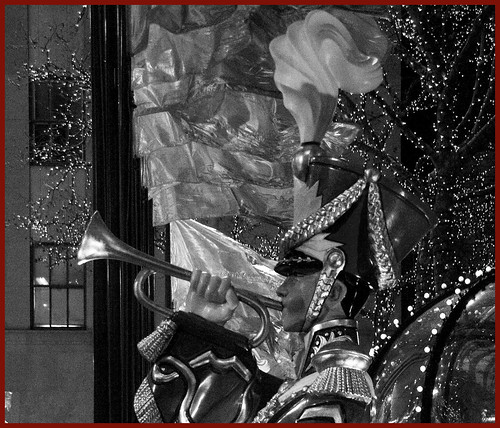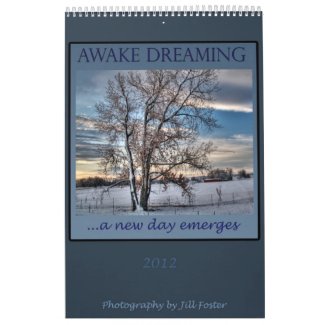
This image, Rocketship to God, is a good example of the result of using a wide angle lens, i.e. a low number of mm. Your eye gives you a panoramic view of your scene, but the camera lens/sensor is only able to capture a small portion. If you zoom in , you get a close up view as if you were walking toward the object. Zooming out (as if you were getting father away) is more complicated optically. Because you are not truly getting father away, the lens compensates, but does this with distortion so that the items in the edge curve towards the center. To measure the amount of distortion, draw lines on each edge that should theoretically be parallel (rectilinear) and you will see that they converge (called barrel distortion).
In this photograph of the St. Louis Cathedral in Jackson Square, New Orleans, it appears that the spires have rotated inward. The large object combined with how close I was and by me shooting upward emphasizes the wide angle effect. While this can give a dramatic effect, it doesn't always work well with all scenes. Be especially wary of using wide angles when photographing someone's face. With most digital SLR cameras, using a focal length of anything lower than 42 mm will give some barrel distortion.
This photo was shot at 18mm at 1/320 sec, f18 with a Nikon D300 and Nikkor 18-200mm zoom lens.
